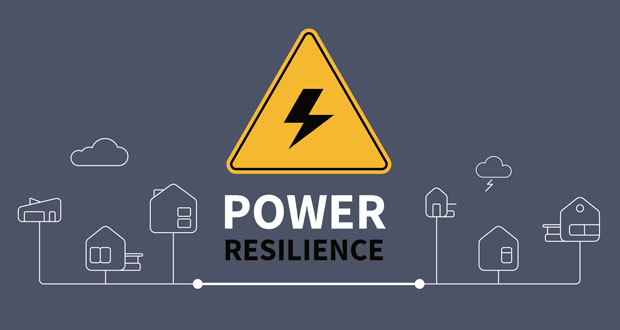Richard Henderson, Power Consultant, Critical Power Supplies with advice on building power resilience
Having resilient power infrastructure in place is now a key component of an energy management strategy. Just this month, the UK government warned that while it would continue to move forward with its net zero commitments, gas was still needed as a “back-up” to minimise the risk of blackouts. As the population and the demand for electricity grows, organisations must manage the shift to renewable energy sources in a way that doesn’t leave them in the dark.
Still, diversifying energy sources to incorporate more renewables, such as solar and wind, is a crucial step toward more reliable and resilient energy supply. Many utility companies are focused on renewable energy and carbon capture as part of their ongoing decarbonisation strategies. But this is no small step as there are several issues to consider, such as increased imbalances in the grid and overloads due to load swings from renewable sources, which can in turn lead to grid instability, energy losses, regulatory noncompliance, and customer dissatisfaction.
GETTING SMART
One crucial step toward power resilience is the implementation of smart grids, electricity networks that use digital technology, sensors, and software to match the supply and demand of electricity in real time while maintaining overall stability. They do this by co-ordinating the needs of all generators, grid operators, end users and electricity market stakeholders to operate all parts of the system as efficiently as possible. The technology is key for network capacity planning and ensuring the grid becomes more adaptive to issues such as extreme weather events, demand fluctuations and load constraints.
As Eric Bakken, Head of Sustainability EMEA for JLL, noted in our recent white paper: “Smart grid technologies, including advanced metering infrastructure, enable real-time monitoring of energy consumption, optimise energy distribution, and facilitate demand response programmes. These systems allow for better utilisation of renewable energy, reduction of energy waste, and efficient load balancing.”
The combination of AI and increasingly accurate data can also provide greater predictive power, especially when it comes to developing next-generation power systems. The International Energy Agency highlights the example of using machine learning to forecast wind power output through weather models and information on the location of turbines. In 2019, Google and its AI arm DeepMind developed a neural network to manage deviations in wind flow around its 700 MW renewable turbine fleet, increasing the accuracy of forecasts. Better visibility now allows Google to sell its power in advance rather than in real time.
TAKE ACTION
There are many things that organisations can do to improve the resilience of their power systems. Implementing energy storage systems, including lithium-ion batteries, pumped hydro storage, and flywheels, will help manage energy supply more effectively. Excess energy can be stored here for later use, acting as a valuable reserve that can be tapped into during peak demand or when the regular supply is disrupted. As part of a smart grid, the energy storage system can release energy automatically, when specific parameters are reached.
Uninterruptible Power Supplies (UPS) play a vital role in safeguarding businesses from power outages and electrical disruptions. They have saved the day by ensuring data centre continuity, protecting critical equipment in healthcare facilities, and preventing data loss in financial institutions. Investing in robust UPS infrastructure not only mitigates financial losses but also maintains customer trust and operational efficiency. As businesses become increasingly reliant on technology, UPS systems are essential tools for resilience and business continuity.
Similarly, the deployment of microgrids can support energy independence and enhanced resiliency. Microgrids enable organisations to operate autonomously, detached from the central power grid, particularly during disruptions, providing a localised power supply and a robust defence mechanism against grid failures.
Organisations can also participate in demand response programmes which offer a proactive means of contributing to grid stability. These programmes involve voluntary adjustments to energy consumption during peak demand periods in exchange for financial incentives. By actively participating in demand response programmes, businesses not only contribute to grid stability but also potentially reduce the risk of disruptions.
Embarking on the journey towards a sustainable future, what’s primarily required are enhanced funding and incentives from governments. Many businesses face a significant barrier in the form of the substantial upfront costs associated with such investments. What’s needed are more accessible avenues for adopting sustainable solutions, coupled with increased investment in enhancing the national grid to accommodate this pivotal transition in our energy landscape.
The path to sustainable energy resilience requires a holistic approach. From grid modernisation, reliable critical power supplies and legislative frameworks to the integration of effective technologies, upskilling of leadership teams and collaborative partnerships, addressing the complex challenges is essential to ensure decarbonisation goals are met.





